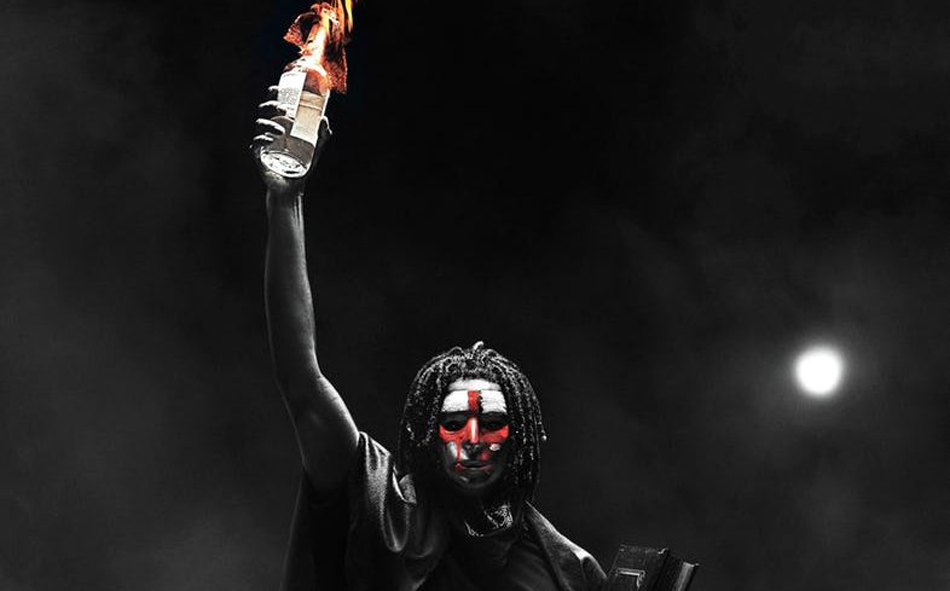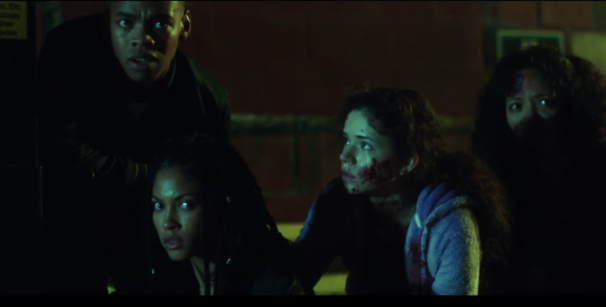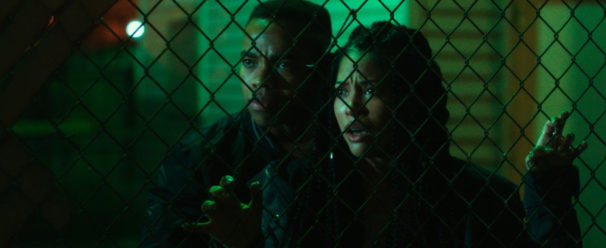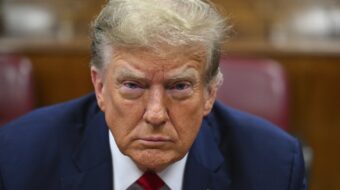
Horror movies frighten by playing on our fears of what could be lurking in the dark corners of our rooms or the unlit space under our beds. They tap into the imagination of things we’ve never seen and know are not real but are afraid of anyway. That’s the standard formula. But sometimes movies come along which are terrifying not for their monsters and ghouls, but because they hold up a mirror to the atrocities of our reality and paint a picture of future terror that’s not necessarily as fictional as we might hope.
Such horror plays on our fears of the right now and gives us a glimpse of the terror of what could actually come to be. The First Purge, opening July 4, is such a movie. It’s steeped in the context of contemporary political turmoil and holds no punches in showing the violence the path we are currently on, if not resisted, could produce. It plays on the idea of the so-called “American Dream” but shows us the making of a nightmare.
The First Purge is the fourth installment in The Purge movie franchise, a movie universe in which one day out of the year, for a 12-hour period, all crimes—including murder— are legal in the United States. This orgy of law-breaking is called the Purge. The latest film, a prequel to the first three, provides the origin story of how the Purge came to be implemented and accepted by the American public. It is an eerily believable tale and can leave the viewer uneasy about how quickly people can come to accept and normalize, something so dangerous and detrimental for certain segments of the population.

In this movie universe, a new political party has emerged called the New Founding Fathers of America (NFFA). They are a party of seemingly older, wealthy, white men who spout rhetoric promising they will bring back jobs, peace, stability, and true American values. Their slogans are not that far off from others we are familiar with these days here in the real world, where we are told every day that we are making America great again.
The NFFA, in a supposed push to bring the crime rate below one percent, decides to implement a test of a sociological theory that if people are allowed to vent their aggression for one night they are less likely to commit crimes for the rest of the year. The party chooses to conduct its experiment in a community on Staten Island, New York, which just happens to be a city filled with working class people of color. In a blatant exploitation of their economic circumstances, the residents are enticed to stay on the island during the test with promises of big cash payouts.
The basis of the plot alone gives the movie space to explore the dynamics of how people in power exploit those without it, the role of government, and also the ramifications such a night of violence forces on a community of color. The movie explores these themes in such a way that ensures its particular message resonates while also allowing the viewer to enjoy the more general horror genre elements. The major twist in the end (and the revelation of the actual reasoning behind the NFFA government’s Purge) serves as a perfect jab of commentary very much relevant to today’s real world politics.
The characters in the film also play a part in giving voice to different arguments surrounding the existence of the Purge and what it will mean for society. Lex Scott Davis plays Nya, the young Black activist who urges people to boycott the experiment and calls out the government’s lack of care for people in her community. Y’Lan Noel plays Dmitri, the street-smart hustler who, although no stranger to violence and crime, is suspicious of the government’s test. Joivan Wade is Nya’s younger brother who, tired of living poor, sees the money offered to participants in the experiment as a positive. Dr. Updale, the scientist who came up with the idea of the experiment in the first place, is portrayed by Marisa Tomei. These characters, along with a host of others, round out the cast, humanizing the plot rather than allowing it to simply consist of people being brutalized with no real explanation of what the violence means.
One of the great things about the film is that it gives characters who are in this community and facing this night of terror the agency to fight against it. The Purge’s movie universe is definitely a dystopian future, as things have reached terrible extremes, but this installment does not wallow in hopelessness. Due to the focus on characters such as Nya and Dmitri, the viewer is able to invest in their story and hope for their triumph in these bleak circumstances.
The violence in the movie is brutal, but not completely pointless. I was weary at first of watching a film with a majority African-American cast with this plotline because I feared sitting in a theater seeing Black people being gunned down for close to two hours. There’s enough of that in the news and online videos of our own reality. But interestingly enough, I felt almost empowered by the film, as the characters rose to the occasion to defend themselves and their community.

Being that this is the fourth movie in an already established franchise, I was also worried the plot might become repetitive and stale. This latest installment is a breath of fresh air, however, because it switches the narrative and gives us a new angle to view how society functions. The Purge franchise is actually no stranger to political commentary, as the previous films, such as The Purge: Election Year, was filled with it. The First Purge is a nice addition to that tradition. Gerard McMurray does a fine job in taking over from The Purge creator James DeMonaco, who directed the first three installments. It still feels like a “Purge” movie for those of us who are familiar with the franchise, but it also feels like a quality standalone film as well.
One of the great marketing strategies of The Purge movie series is that the films are released on Independence Day, a holiday where people often reflect on the history of the United States. Such reflections, however, can often become pretty shallow. As we live through a period in which immigrant families are torn apart, people are denied the right to enter the country because of what religion they practice, and women’s reproductive rights are under threat, a watering down of history is not what is needed.
The First Purge is terrifying because it’s not just a reflection of what can come to be, but also a modernized picture of what has already been. It isn’t like history hasn’t shown us before—through Nazi Germany, the American slave trade, the genocide of Native Americans, and the like—that real monsters and terror aren’t only in fiction and underneath the bed.
The trailer for the film can be seen here.












Comments